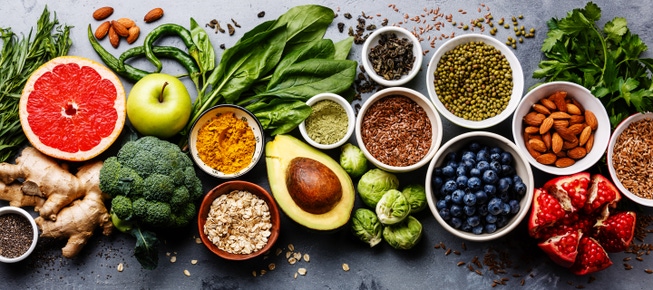
Fact or fiction: does cooking your food remove nutrients?
Vegetables are full of goodness but how you prepare them can have an impact on nutrients and just how well your body absorbs them.
The vitamins, minerals and antioxidants are locked inside the plant cells. This is the structure that gives veggies their crunch, but it can break down in cooking.
So what’s better - cooked or raw? Unfortunately, the answer is not that simple.
Some vegetables contain water-soluble vitamins and phytochemicals and these can leech out when boiled. Picture boiling carrots; if you leave them to boil too long the water takes on an orange hue, which comes from some of the vitamins.
On the flip side, fat-soluble vitamins such as vitamin A and E are less effected by cooking and some nutrients such as lycopene – a powerful antioxidant that has been found to offer protective benefits against some cancers – is easier for the body to absorb when cooked.
The solution is to enjoy both cooked and raw veggies. If you are cooking, look for quick methods with minimal water or recipes that retain and make the most of cooking juices.
What are other ways you can get the most out of your food?
To peel or not to peel
For many fruits and veggies much of the goodness is retained in the peel or next to it, so if possible, try to resist peeling. As an example, the antioxidants in an apple are found in the peel and flesh, but there’s more than twice as many antioxidants in the peel.
Fresh or frozen
While you can’t beat fresh food for taste, often convenience and price will find you reaching for frozen fruit and veggies. Thankfully, the nutrient quality is often similar to fresh veggies, because in many cases the vegetables are snap frozen within hours of picking. So if frozen is easier for you, and it means you’re eating more fruit and veg, then go for it.
To juice or blend
Throwing a heap of fruit and veggies into a juicer, for a tasty drink on-the-go, may seem like a convenient way to reach your 2 fruit and 5 veg a day, but is it a healthy approach? The process of juicing actually removes much of the fibre found in fruit. As a result, you’ll likely end up with a drink that’s higher in GI and has a lot less fibre than the original fruit or vegetables. If you can’t go past a fruit and veggie drink, try blending instead of juicing so you don’t miss out on the filling, gut-friendly fibre.
Boil or microwave
Boiling can dissolve water-soluble vitamins in food. If you prefer cooking this way try to use minimal water and only boil your veggies for a short time. A quick blanch. If you microwave your veggies for convenience, you don’t have to worry. As a microwave cooks food quickly with a minimal amount of water, you’re able to retain a good amount of nutrients.
Stir-frying or stewing
Vitamin C and the B group vitamins (including folate) are water-soluble and they are found in vegetables like capsicums, broccoli, carrots and spinach. To retain more of these vitamins, try eating these veggies raw or use quick cooking methods like stir-frying or lightly steaming. If you prefer softer vegetables, cook them in stews or soups so any water-soluble vitamins are retained in the broth. You can even keep liquid from boiled veggies to use later as stock.
Our daily vegetable intake is alarmingly low (only 7% of adults and 5% of children eat enough veggies), so cook them the way you love to eat them so you’ll add an extra serve to your plate.

The latest nutrition advice, plus health and wellness tips delivered to your inbox monthly

